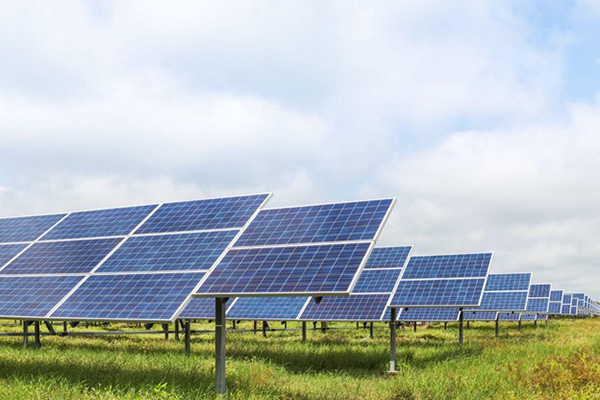As we continue burning fossil fuels for everything from energy to transportation, the world continues getting hotter. This human-influenced climate change and global warming is causing severe weather patterns and could worsen without swift action.
Many people look to do their part by offsetting their carbon footprints with carbon offset credits. But how do you know these carbon offsets are going toward supporting projects that are really helping us lower our overall greenhouse gas emissions?
Fortunately, there are carbon offset verification processes that help verify and certify a carbon offset program is legit. Below, we outline the carbon offset verification process, what makes a carbon offset good, how carbon registries play a role, and more.
How are carbon offsets verified?
Unfortunately, there is no single governing body that certifies carbon offsets. Instead, a collection of nonprofit third-party companies check carbon offset claims, ensure they’re valid, and certify the carbon offsets.
Some of the larger nonprofits that verify carbon offsets include:
- The Gold Standard
- Climate Action Reserve
- American Carbon Registry
- Verra
- CDM
- SCS Global Services
- Green-e Climate Standard
Each of these nonprofits has its own methodology for verifying carbon offsets, but the main goal is to ensure the offset program is legitimate, helping the environment through greenhouse gas (GHG) emission reductions, completed as promised, and above and beyond the normal operations of the entity applying for the offset.
Are carbon offsets legitimate?
When looking to reduce your carbon footprint, you’ll likely come across the option of purchasing carbon offsets. These offsets are designed to counter your carbon footprint by funding programs that help reduce greenhouse gas emissions or perform sequestration through technological updates to existing facilities, sustainable development, enhanced energy efficiency, reforestation, and more.
But are these carbon reductions truly legit and effective at GHG emission reductions? That depends on the offset itself and whether or not it’s verified and vetted by a trusted third party.
Nonprofit companies, like the ones listed above, perform verification to vet carbon offset programs and ensure they are legitimate, effective, and not wasting your investment.
As long as you purchase an offset credit that’s been through one of these important independent third-party carbon offset verification processes, you can rest assured you’re dealing with a legitimate carbon offset.
What makes a good carbon offset?
The ultimate purpose of a carbon offset is to neutralize an entity’s unavoidable GHG emissions through other actions. Essentially, a high-quality carbon offset project delivers the same results as if the organization trimmed its carbon footprint by the same level.
While this is the basic idea of carbon offsets, evaluating the total quality of carbon reduction projects requires six key tests.
Additionality
A good carbon offset project is additional, meaning the reduced carbon emissions from the project would not have occurred if the carbon credit funding didn’t exist. So, if a company already budgeted for clean energy, such as solar panels, wind power, or hydropower, to supply energy to its building, then received carbon credit funding to install it, this would not be a good carbon offset because it was already planned and budgeted by the business.
However, if that company had no plans to install the panels and the funding paid for the panels, thereby reducing its carbon footprint, this would be a good carbon offset.
There’s also policy-level additionality, meaning the project goes above and beyond national or international climate policies. So, if a project simply adheres to local or national policies already in place, it is not additional.
Properly estimated
Another sign of a good carbon offset is the project properly estimates and counts its emission reductions. Low-quality carbon offsets tend to overestimate their GHG emissions reductions to sell more carbon offset credits.
This often happens when carbon reduction project developers overestimate their baseline emissions, which are GHG emissions that occurred before carbon-reducing strategies are put into place.
Permanent
Permanence is another key indicator of a good carbon offset project. This means that the GHG emissions offset by the project are permanent and have virtually no chance of being re-emitted into the atmosphere.
For example, say a company receives carbon credits for planting 5,000 trees on its property. However, 10 years later, it cuts and burns those trees to make room for expansions. The deforestation and burning make this offset temporary and not good.
The GHG emission must be kept out of the atmosphere for 100 years to be considered permanent.
Exclusive
A good carbon offset credit is also exclusive, meaning it cannot be claimed by another entity, which is called double counting.
There are four main types of double counting, which can be done intentionally or unintentionally. The four main types of double counting include:
- Double claiming: When GHG emission reductions are claimed by multiple organizations
- Double selling: When an entity sells the same GHG benefit more than once
- Double accounting against a target: When GHG reductions are accounted for more than once
- Double counting of a unit: When GHG reductions are unitized and available under multiple mechanisms or products.
No social or environmental harm
Reducing GHG emissions and getting closer to a net-zero carbon is great, but not if it comes at the expense of other environmental or social issues. For example, if a company offsets tonnes of carbon by planting 5,000 trees, but this tree planting severely damages the soil in the area, this is not a good carbon offset project.
Third-party verification
The final sign of a good carbon offset program is one that’s certified by an accredited third-party verification body, such as the ones listed above. The verification activities will vary between providers, but they all aim to confirm that these carbon offset programs uphold their promises, don’t waste funds, and reduce their carbon footprint sustainably.
Who can certify carbon credits?
Carbon credit certification happens through the aforementioned accredited third-party verification bodies, such as:
- The Gold Standard
- Climate Action Reserve
- American Carbon Registry
- Verra
- CDM
- SCS Global Services
- Green-e Climate Standard
Purchasing certified carbon credits helps ensure that what you’re buying meets all the requirements for a high-quality carbon offset program.
What is carbon verification?
Carbon verification is when a third-party verification organization inspects a carbon offset program and ensures it meets its standards. If the program meets the standards, the carbon offset credits are verified, making them safe for consumers to purchase and offset their own carbon footprint.
Each third party has its own verification process, but the global standard is the Verified Carbon Standard (VCS). Verra, one of the many third-party verification organizations, oversees the VCS program and rules.
VCS’ rules and regulations ensure all GHG removals or reductions are:
- Real and measurable
- Additional
- Conservative
- Permanent
- Independently verified
- Uniquely numbered and transparently listed
What is a carbon offset registry?
When carbon offsets are granted, they must be entered in a registry for tracking. Registries are entities that track carbon offset projects and issue carbon offset credits for each certified or verified unit of emission reduction or removal. They also track carbon offset ownership.
Carbon offset registries attach a serial number to each verified or certified offset credit and transfer the serial number between owners when it is sold or involved in a trade program. Once an owner uses a carbon offset credit, the registry retires the serial number, preventing resale and reuse.
These registries are why offsets have become a credible and fungible commodity over the years.
One such registry is the American Carbon Registry (ACR). It oversees the carbon offset projects’ registration and verification in the voluntary carbon market. It also oversees California’s cap-and-trade program.
Beyond ACR, there are other voluntary market registries, including APX Inc., Markit, and Verra.
How do you certify carbon neutrality?
Carbon neutrality, like carbon offset credits, requires verification or certification. Again, this is all handled by independent third-party organizations specializing in this area.
If a company wishes to become certified as net-zero, it starts with reaching out to one of the certification organizations, such as Pathzero, CarbonNeutral, or SCS Global Services. These companies will explain the requirements to become certified carbon neutral.
For example, Pathzero requires a company to measure its scope 1, 2, and 3 emissions for 12 months within a single fiscal or calendar year to create a total carbon footprint. The company must then identify carbon reduction opportunities and plan for and enact at least three carbon reduction initiatives. Then, the company can offset any additional carbon footprint through purchasing carbon offsets.
After reducing or offsetting its carbon footprint, the company then has Pathzero come in to verify and validate the work. The company then enters a license agreement with Pathzero to ensure it continues meeting its net-zero status.
What does it mean to purchase carbon offsets?
When you purchase a carbon offset, you’re buying more than just a piece of paper or data saying you paid to offset your carbon footprint. Instead, you’re purchasing a company’s commitment to remove a specific amount of GHG emissions.
By purchasing a carbon offset, you are paying to offset the amount of carbon emissions involved in your life. For example, if you take commercial air travel, you are responsible for a portion of the carbon emissions from the plane you took. While you can’t absorb these emissions yourself, you can offset them by purchasing a carbon offset credit.
Which is the best carbon offset company?
You can choose from many companies to purchase carbon offsets from. Some are relatively simple and offer only the basics. Others, such as Terrapass, offer a wide range of offset options to fit all your needs.
Terrapass’ offerings include:
With all these options and flexible offset pricing to fit your budget, Terrapass is certainly one of the best carbon offset companies in the U.S.
Carbon offset verification ensures your offsets are helping
Anyone can say they promise to reduce their carbon footprint and seek funding to do so. But funding this project may not actually help the environment if there’s no carbon offset verification in place.
Carbon offset verification ensures the company is working to reduce its carbon footprint and will do so sustainably, permanently, and without other negative social or environmental impacts. This gives the carbon offset buyer peace of mind knowing they are doing their part to protect the environment with these credits.
Terrapass offers a wide range of carbon offset credits, and each is independently verified at the project level by a third party to ensure we work with only the best carbon offset programs. Choose from Terrapass’ various carbon credit packages or even a monthly subscription plan for continuous offsetting.
Brought to you by terrapass.com
Featured image:











